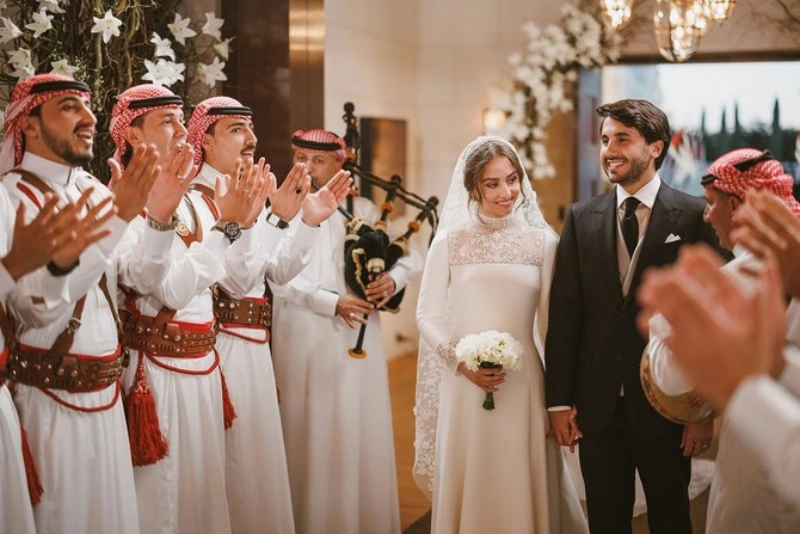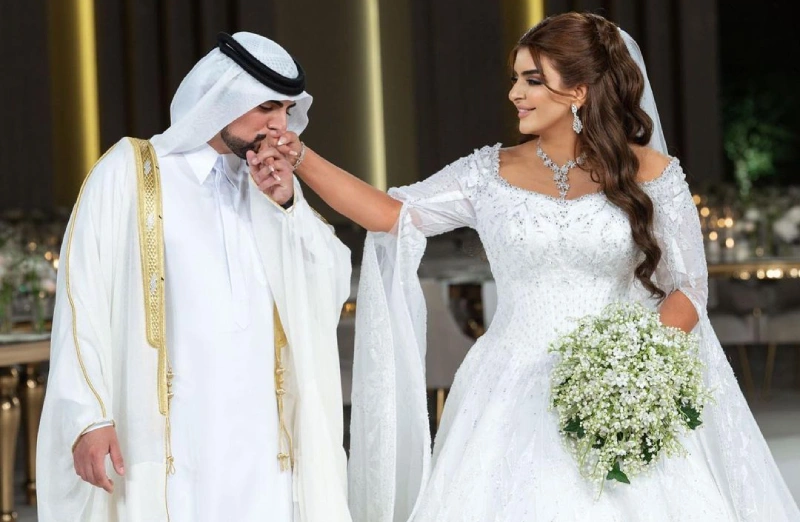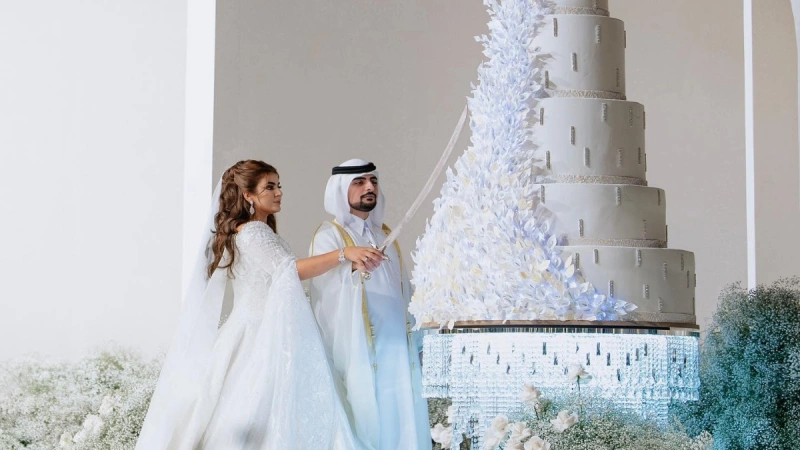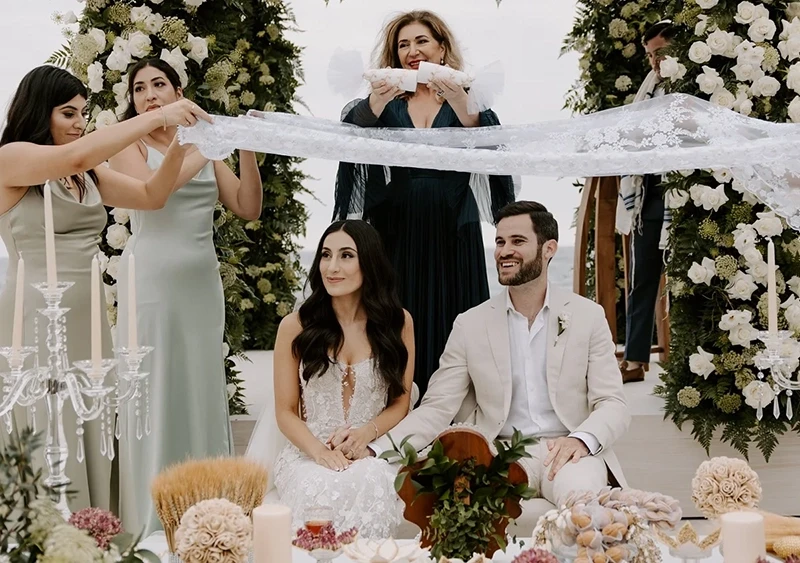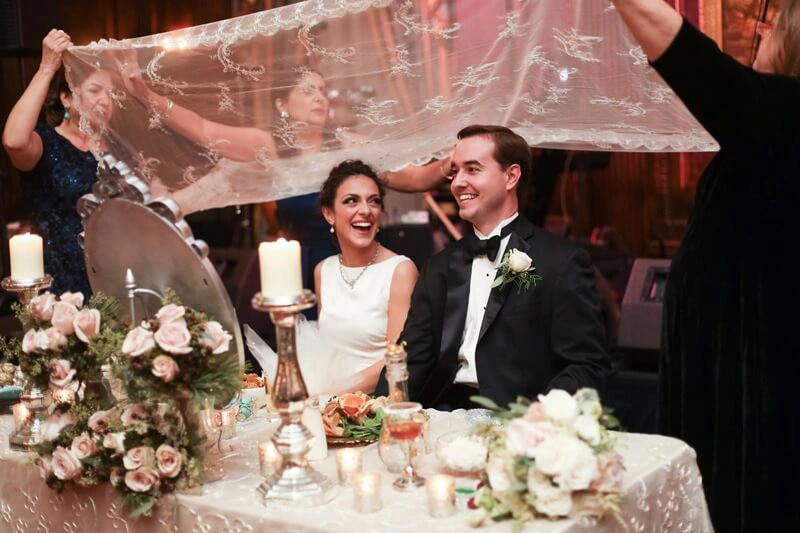Weddings are a beautiful celebration of love and culture, but imagine blending the rich traditions of Persian and Arabic wedding styles to create a truly magical experience. Both cultures offer an array of stunning customs, from the vibrant zest of Persian festivities to the deep-rooted elegance of Arabic ceremonies. In this article, we explore the enchanting art of mixing these two distinct yet harmonious styles, ensuring that your special day radiates warmth, joy, and an unforgettable ambiance. Whether it’s through the breathtaking aesthetics of the décor, the mouthwatering flavors of the cuisine, or the melodic rhythms of the music, merging these traditions can craft a wedding that is uniquely yours. Join us on this journey as we uncover tips and inspiration to embrace the beauty of both worlds, resulting in a celebration that honors heritage while creating new memories. Get ready to dive into a mosaic of love that transcends boundaries and unifies cultures!
The Significance of Cultural Fusion in Weddings
Weddings are not just about the union of two individuals; they are also a celebration of the coming together of two families, traditions, and cultures. When it comes to blending Persian and Arabic wedding styles, this fusion holds an even deeper significance. It symbolizes harmony, respect, and the beauty of diversity. By incorporating elements from both cultures, you not only honor your heritage but also create a unique tapestry that tells your love story in a way that is inclusive and representative of your backgrounds. This cultural fusion can transform your wedding into an unforgettable experience that resonates with all your guests, evoking a sense of unity and shared joy.
The blending of Persian and Arabic wedding traditions can also serve as a beautiful metaphor for the journey of marriage itself. Just as two individuals come together to form a cohesive partnership, the merging of these two rich cultural heritages can create a seamless and harmonious celebration. This fusion allows for the best of both worlds to shine through, from the vibrant and lively Persian festivities to the elegant and sophisticated Arabic customs. By embracing both, you craft a wedding that is not only visually stunning but also deeply meaningful.
Moreover, in today’s globalized world, many couples come from diverse backgrounds. A wedding that blends Persian and Arabic styles can serve as a powerful statement of inclusivity and unity. It shows a willingness to embrace and celebrate differences, fostering a sense of community and togetherness. This cultural fusion can inspire your guests, encouraging them to appreciate and respect the rich tapestry of traditions that make up our world. Ultimately, it’s a celebration of love in its most beautiful and inclusive form.
Key Elements of Persian Wedding Ceremonies
Persian weddings are renowned for their opulence, vibrant colors, and intricate customs. One of the key elements of a Persian wedding is the sofreh aghd, a beautifully decorated spread that plays a central role in the ceremony. The sofreh aghd is adorned with symbolic items such as mirrors, candles, and spices, each representing different aspects of life and marriage. The mirror symbolizes purity and brightness, while the candles represent energy and clarity. The spices, including cinnamon and cardamom, signify a fragrant and prosperous life together. This elaborate setup creates a visually stunning and meaningful focal point for the wedding ceremony.
Another essential feature of Persian weddings is the presence of traditional music and dance. The joyous sounds of the daf, a traditional Persian drum, and other instruments set the tone for a lively celebration. The bride and groom, along with their family and friends, often partake in the raghse chaghoo, or knife dance, where they dance with a knife before the cake cutting. This playful and entertaining tradition adds a festive atmosphere to the event, ensuring everyone is engaged and having a good time.
Persian weddings also place a strong emphasis on poetry and literature. The works of famous Persian poets like Rumi and Hafez are often recited during the ceremony, adding a layer of romanticism and depth. These poetic verses speak to the beauty of love, commitment, and the journey of life together. By incorporating such literary elements, Persian weddings create a profound and reflective experience that resonates with both the couple and their guests.
Essential Features of Arabic Wedding Celebrations
Arabic weddings are characterized by their grandeur, elegance, and deeply rooted traditions. One of the most significant aspects of an Arabic wedding is the katb el-kitab, or the signing of the marriage contract. This ceremony is typically conducted in the presence of a religious leader, close family members, and witnesses. The contract signifies the official union of the couple and is often accompanied by prayers and blessings. This formal and sacred ritual sets the tone for the rest of the celebration, emphasizing the importance of commitment and faith.
Another hallmark of Arabic weddings is the zaffa, a lively procession that marks the entrance of the bride and groom. Accompanied by a band playing traditional music, the zaffa includes drummers, dancers, and sometimes even sword bearers. This grand entrance creates a sense of excitement and anticipation, captivating the guests and heralding the start of the festivities. The zaffa not only highlights the couple but also showcases the rich cultural heritage of Arabic traditions.
Arabic weddings are also known for their elaborate and luxurious décor. Venues are often adorned with lavish floral arrangements, intricate patterns, and rich fabrics. The use of gold and other metallic accents adds a touch of opulence, creating a regal and sophisticated ambiance. This attention to detail in the décor reflects the importance of beauty and elegance in Arabic culture, ensuring that the wedding is a visual feast for all attendees.
How to Blend Persian and Arabic Aesthetics
Blending Persian and Arabic aesthetics requires a thoughtful approach to ensure that the unique elements of both cultures are harmoniously integrated. One effective way to achieve this is through the use of color. Both Persian and Arabic weddings are known for their vibrant and rich color palettes. Incorporating shades like deep reds, royal blues, and luscious golds can create a cohesive and visually striking look. These colors not only complement each other but also evoke a sense of luxury and celebration, setting the perfect tone for your wedding.
When it comes to décor, consider combining the intricate patterns and motifs from both cultures. Persian weddings often feature detailed floral designs and geometric patterns, while Arabic weddings are known for their use of calligraphy and elaborate tile work. By blending these elements, you can create a unique and captivating aesthetic. For instance, you can incorporate Persian floral motifs into your table settings and use Arabic calligraphy for your signage and invitations. This fusion of styles will create a visually rich and culturally immersive environment.
Lighting also plays a crucial role in blending Persian and Arabic aesthetics. Traditional lanterns, chandeliers, and candlelight can add a warm and inviting glow to your venue. Persian weddings often use mirrored surfaces to reflect light and create a shimmering effect, while Arabic weddings might feature hanging lanterns and fairy lights. Combining these lighting elements can enhance the overall ambiance, making your wedding feel magical and enchanting. The interplay of light and shadow will add depth and dimension to your décor, creating an unforgettable visual experience.
Unique Rituals from Both Cultures to Incorporate
Incorporating unique rituals from both Persian and Arabic cultures can add a layer of depth and meaning to your wedding ceremony. One beautiful Persian tradition to consider is the sofreh aghd. This ceremonial spread, filled with symbolic items, can be customized to include elements from both cultures. For example, you can add Arabic calligraphy or traditional Arabic sweets to the sofreh aghd. This fusion of traditions creates a personalized and meaningful setup that honors both heritages.
From the Arabic side, the zaffa procession can be a fantastic addition to your wedding. This lively and energetic entrance can be blended with Persian musical elements to create a unique and exciting experience. Imagine the bride and groom entering the venue to the sounds of both Persian and Arabic instruments, accompanied by dancers from both cultures. This fusion of traditions will captivate your guests and set the tone for a joyous and celebratory event.
Another ritual to incorporate is the recitation of poetry from both Persian and Arabic literary traditions. Including verses from renowned poets like Rumi, Hafez, and Al-Mutanabbi can add a layer of romanticism and depth to your ceremony. These poetic verses can be recited during the vows, as part of the sofreh aghd, or even as a separate reading. This blend of literary traditions will create a profound and reflective experience, resonating with both the couple and their guests.
Choosing the Right Venue for a Mixed Wedding
Selecting the right venue is crucial for a wedding that blends Persian and Arabic styles. The venue should not only be aesthetically pleasing but also versatile enough to accommodate the various elements of both cultures. Outdoor venues, such as gardens or courtyards, can be an excellent choice, as they offer a natural and open setting that can be easily customized. These spaces provide the flexibility to set up a sofreh aghd, a zaffa procession, and other cultural elements without feeling constrained.
If you prefer an indoor venue, look for spaces that offer a blend of traditional and modern architecture. Venues with ornate details, such as intricate moldings, high ceilings, and large windows, can provide a beautiful backdrop for your wedding. Additionally, venues with neutral color palettes and flexible layouts can be easily transformed to incorporate the vibrant and rich aesthetics of both Persian and Arabic traditions. Consider venues that offer separate spaces for different parts of the celebration, such as the ceremony, reception, and dinner, allowing you to create distinct yet cohesive environments.
Another important factor to consider is the venue’s cultural sensitivity and experience with multicultural weddings. Choose a venue that is open to and respectful of your cultural traditions, and that has experience hosting weddings that blend different heritages. This ensures that the staff understands the significance of the various rituals and can accommodate your specific needs. Working with a venue that appreciates and celebrates cultural diversity will make the planning process smoother and more enjoyable.
Traditional Attire: Merging Persian and Arabic Styles
Wedding attire is a crucial element in showcasing the fusion of Persian and Arabic styles. Both cultures have their unique traditional garments that can be beautifully blended to create a stunning and cohesive look. For the bride, consider a dress that incorporates elements from both Persian and Arabic fashion. Persian bridal gowns often feature intricate beadwork, embroidery, and flowing fabrics, while Arabic bridal dresses are known for their opulence, detailed lace, and luxurious fabrics. A dress that combines these elements can create a unique and breathtaking ensemble that honors both traditions.
The groom’s attire can also reflect the blending of cultures. Persian grooms typically wear a suit or a traditional outfit known as the shalwar kameez, which includes a long tunic and trousers. Arabic grooms, on the other hand, often wear a thobe or a bisht, a long robe worn over the thobe. By combining these elements, the groom can create a look that is both elegant and culturally significant. For instance, he could wear a Persian-inspired suit with Arabic embroidery or a traditional thobe with Persian accessories.
Accessories play a significant role in completing the bridal and groom’s look. For the bride, consider incorporating traditional Persian jewelry, such as a headpiece or earrings, with Arabic accessories like a beautifully embroidered veil or a statement necklace. The groom can also accessorize with items that reflect both cultures, such as a Persian-style sash or belt paired with Arabic cufflinks or a traditional headpiece. These thoughtful details will enhance the overall look and create a harmonious blend of Persian and Arabic styles.
Culinary Delights: Combining Persian and Arabic Cuisine
The culinary aspect of your wedding is an excellent opportunity to blend Persian and Arabic flavors, creating a feast that delights and surprises your guests. Both cuisines are known for their rich and aromatic dishes, making them a perfect match for a wedding celebration. Start with appetizers that showcase the best of both worlds, such as Persian kebabs, Arabic mezze platters, and a variety of breads like lavash and pita. These flavorful starters will set the stage for an unforgettable dining experience.
For the main course, consider a menu that features signature dishes from both Persian and Arabic cuisines. Persian cuisine is famous for its fragrant rice dishes, such as saffron-infused rice and jeweled rice, which can be paired with succulent stews like ghormeh sabzi or fesenjan. Arabic cuisine offers a variety of hearty and flavorful dishes, such as lamb mandi, chicken makloubeh, and kafta. By incorporating these dishes, you create a diverse and satisfying menu that reflects the culinary richness of both cultures.
Desserts are another area where you can blend Persian and Arabic influences to create a sweet and memorable finale. Persian desserts like baklava, saffron ice cream, and rosewater-infused sweets can be paired with Arabic treats such as qatayef, kunafa, and maamoul. Offering a dessert table that features a mix of these delicacies will provide your guests with a delightful and indulgent experience. Additionally, consider serving traditional Persian and Arabic beverages, such as tea infused with cardamom and mint, to complement the dessert offerings and add a refreshing touch.
Conclusion: Celebrating Love Through Cultural Unity
In blending Persian and Arabic wedding styles, you create a celebration that is not only visually stunning but also deeply meaningful. This fusion of traditions honors the rich cultural heritage of both families while creating a unique and memorable experience for all your guests. By thoughtfully incorporating elements from both cultures, you craft a wedding that is a true reflection of your love and commitment, transcending boundaries and uniting two distinct yet harmonious worlds.
The beauty of merging Persian and Arabic wedding styles lies in the ability to create a tapestry of traditions that tells your unique love story. From the vibrant colors and intricate patterns to the soulful music and delicious cuisine, every element of your wedding will be a testament to the beauty of cultural diversity. This celebration of love through cultural unity not only honors your heritage but also sets the foundation for a harmonious and inclusive future together.
Ultimately, a wedding that blends Persian and Arabic styles is a powerful statement of love, respect, and unity. It serves as a reminder that, despite our differences, we are all connected through the universal language of love. By embracing and celebrating the rich traditions of both cultures, you create a wedding that is a true reflection of your shared journey, filled with joy, warmth, and unforgettable memories.

